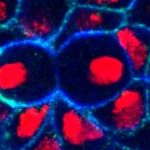Link to Pubmed [PMID] – 24682824
Nucleic Acids Res. 2014 Jun;42(10):6128-45
Cis-regulatory modules (CRMs) and motifs play a central role in tissue and condition-specific gene expression. Here we present Imogene, an ensemble of statistical tools that we have developed to facilitate their identification and implemented in a publicly available software. Starting from a small training set of mammalian or fly CRMs that drive similar gene expression profiles, Imogene determines de novo cis-regulatory motifs that underlie this co-expression. It can then predict on a genome-wide scale other CRMs with a regulatory potential similar to the training set. Imogene bypasses the need of large datasets for statistical analyses by making central use of the information provided by the sequenced genomes of multiple species, based on the developed statistical tools and explicit models for transcription factor binding site evolution. We test Imogene on characterized tissue-specific mouse developmental CRMs. Its ability to identify CRMs with the same specificity based on its de novo created motifs is comparable to that of previously evaluated ‘motif-blind’ methods. We further show, both in flies and in mammals, that Imogene de novo generated motifs are sufficient to discriminate CRMs related to different developmental programs. Notably, purely relying on sequence data, Imogene performs as well in this discrimination task as a previously reported learning algorithm based on Chromatin Immunoprecipitation (ChIP) data for multiple transcription factors at multiple developmental stages.

